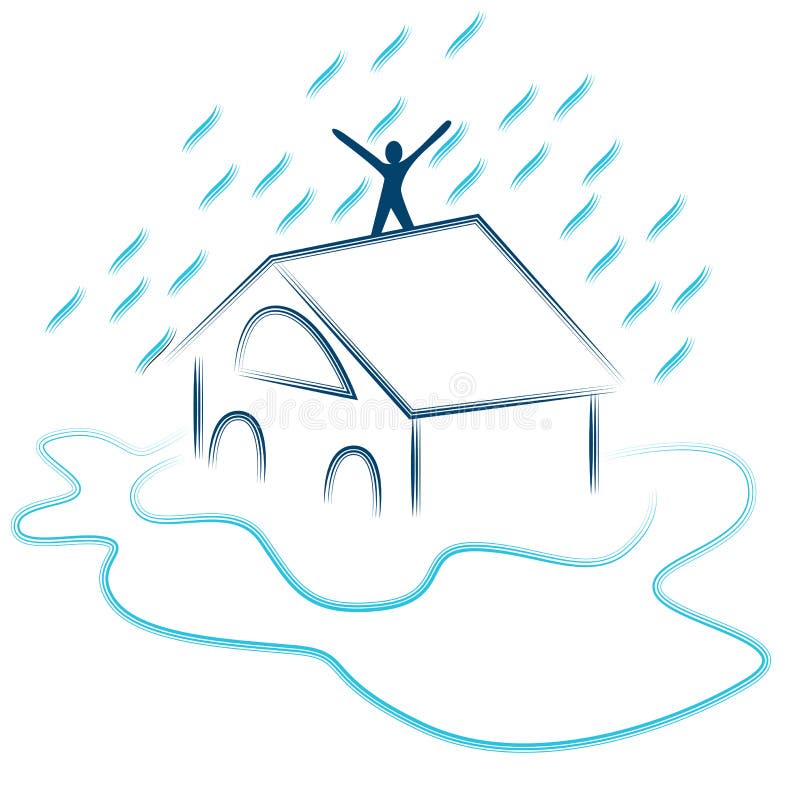Flash Flood Emergency: Recognizing The Signs And Taking Action

Table of Contents
Recognizing the Warning Signs of a Flash Flood
Flash flood warnings are serious and require immediate attention. Knowing the signs of an impending flash flood can be the difference between safety and danger. Several indicators suggest an increased risk of rapid flooding.
Sudden Heavy Rainfall: A flash flood doesn't require days of persistent rain. Intense rainfall, even over a short period (an hour or less), can trigger a flash flood, especially in areas with poor drainage or steep slopes. The difference between a flash flood watch and a flash flood warning is crucial: a watch means conditions are favorable for a flash flood to develop, while a warning indicates a flash flood is happening or is imminent. Pay close attention to both.
Rapidly Rising Water Levels: One of the most obvious signs is rapidly rising water levels in rivers, streams, and creeks. If you see water levels rising significantly in a short time, this is a major red flag. Overflowing rivers and streams indicate that the water is exceeding its capacity, leading to potential widespread flooding.
Increased Water Flow in Normally Dry Areas: Water appearing in unexpected places, such as normally dry washes, low-lying areas, or ditches, is a critical warning sign. This indicates that the rainfall is overwhelming the natural drainage systems, and flooding is likely to spread quickly.
Muddy Water: The appearance of muddy or extremely brown water is a strong indicator of increased sediment runoff due to heavy rainfall. This indicates a surge of water carrying significant amounts of soil and debris.
Unusual Sounds: Listen for the rumbling sounds of water rushing downstream. This indicates a significant increase in water flow and potential danger.
Official Warnings: Above all, heed official warnings from the National Weather Service (NWS) or your country's equivalent meteorological agency. These warnings are based on real-time data and provide critical information to help you stay safe.
- Stay informed about weather forecasts. Regularly check weather reports on television, radio, or reliable online sources.
- Sign up for emergency alerts. Many communities offer emergency alert systems via text message or email.
- Know your local flood-prone areas. Familiarize yourself with areas in your community that are historically prone to flooding.
Immediate Actions to Take During a Flash Flood Emergency
A flash flood emergency demands immediate action. Your safety is paramount.
Evacuate Immediately: If authorities issue an evacuation order, leave immediately. Do not delay. Flash floods can develop and intensify rapidly, leaving little time to escape.
Seek Higher Ground: Once a flash flood begins, your primary goal is to reach higher ground as quickly as possible. This is the most crucial action you can take to protect yourself from the rising water.
Avoid Flooded Areas: Never drive or walk through floodwaters. The depth of the water may be deceiving, and the current can be incredibly strong, easily sweeping you away. Even a seemingly shallow area can conceal dangerous debris or deep pockets of water.
Turn Around, Don't Drown: This is not just a slogan; it's a life-saving rule. Attempting to drive or walk through floodwaters is extremely dangerous and can be fatal.
Contact Emergency Services: If you are trapped or need assistance, contact your local emergency services immediately. Provide your location and any other relevant information.
Move Valuables to Upper Floors: If evacuation isn't possible, move valuable items and possessions to higher floors or elevated areas of your home to minimize damage.
- Have a pre-determined evacuation route. Plan your escape route in advance and ensure everyone in your household knows it.
- Pack an emergency kit. Include essentials like water, non-perishable food, first-aid supplies, medications, flashlights, and batteries.
- Know the location of nearby shelters. Be aware of the locations of designated emergency shelters in your area.
- Never drive through flooded areas. The force of the water can easily sweep vehicles away.
Post-Flash Flood Actions and Recovery
After the flash flood subsides, there are critical steps to take for safety and recovery.
Check for Damage: Once the immediate danger has passed, carefully inspect your property for structural damage and potential hazards. Look for cracks in foundations, damaged electrical wiring, and gas leaks.
Avoid Contact with Floodwaters: Floodwaters are often contaminated with sewage, chemicals, and other hazardous materials. Avoid contact with floodwaters whenever possible, and wear protective gear (boots, gloves) if you must enter affected areas.
Report Damage to Authorities: Report any damage to your property to your insurance company and local authorities. This is crucial for receiving assistance and support.
Clean Up Safely: When cleaning up, prioritize safety. Use appropriate protective gear, be mindful of potential hazards, and dispose of contaminated materials properly.
Seek Professional Help: For significant structural repairs or extensive cleanup, seek professional help from qualified contractors or remediation specialists.
- Take photos of damage for insurance claims. Documenting the damage with photos is essential for your insurance claim.
- Use caution when handling damaged materials. Many materials may be unstable or contaminated.
- Be aware of potential health hazards from floodwaters. Contact with contaminated water can cause serious health problems.
- Consider flood insurance. Flood insurance can help cover the costs of damage from future flash floods.
Conclusion:
Flash flood emergencies demand immediate and decisive action. By understanding the warning signs and knowing the appropriate steps to take, you significantly increase your chances of staying safe. Remember, when in doubt, evacuate! Prepare your emergency plan today and familiarize yourself with local flood safety guidelines to mitigate risk during a flash flood emergency. Don't wait until it's too late – take action now to safeguard your family and property. Being prepared for a flash flood can save lives.

Featured Posts
-
 Yom Ha Zikaron 2024 Masa Israels Unprecedented English Ceremony
May 26, 2025
Yom Ha Zikaron 2024 Masa Israels Unprecedented English Ceremony
May 26, 2025 -
 Kiefer Sutherland Casting News Sends Fans Into A Frenzy
May 26, 2025
Kiefer Sutherland Casting News Sends Fans Into A Frenzy
May 26, 2025 -
 Rtbf Et Rtl Belgium Contre L Iptv Les Raisons De Leur Offensive
May 26, 2025
Rtbf Et Rtl Belgium Contre L Iptv Les Raisons De Leur Offensive
May 26, 2025 -
 Court Rejects Trumps Claims Against Elite Law Firms
May 26, 2025
Court Rejects Trumps Claims Against Elite Law Firms
May 26, 2025 -
 Ferstapen Vs Mercedes To Telos Mias Pithanis Synergasias
May 26, 2025
Ferstapen Vs Mercedes To Telos Mias Pithanis Synergasias
May 26, 2025
